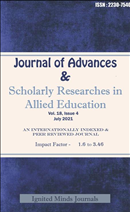A Critical Study of Relationships of Predators and Parasitic Infections in Wildlife Animals
Exploring the impact of environmental change on predator-prey dynamics and parasitic infections in wildlife animals
Keywords:
relationships, predators, parasitic infections, wildlife animals, environmental change, food availability, physiological requirements, reproductive requirements, disease susceptibility, natural habitat, invade neighboring environments, ill household animals, parasitic lifestyle, Bencounter filters, Bcompatibility filters, host-parasite cohabitationAbstract
Due to environmental change, there is less food available, putting wildlife in peril. The majorityof big mammals change their eating habits to accommodate their physiological and reproductiverequirements, and when a desired food source is scarce, the animals are more prone to disease. Theseanimals sometimes leave their natural habitat in quest of food, invade neighboring environments, andoccasionally come into touch with ill household animals. Additionally, they could start consuminganything that is put in front of them, which might be deadly. Living a parasitic lifestyle involves a widerange of various factors. Bencounter filters Bcompatibility filters are part of Combes' complete theoryof Bfilters, which explains the basics governing the development of host-parasite cohabitation.Downloads
Download data is not yet available.
Published
2021-07-01
Issue
Section
Articles
How to Cite
[1]
“A Critical Study of Relationships of Predators and Parasitic Infections in Wildlife Animals: Exploring the impact of environmental change on predator-prey dynamics and parasitic infections in wildlife animals”, JASRAE, vol. 18, no. 4, pp. 1200–1206, July 2021, Accessed: Jan. 11, 2026. [Online]. Available: https://ignited.in/index.php/jasrae/article/view/13388











